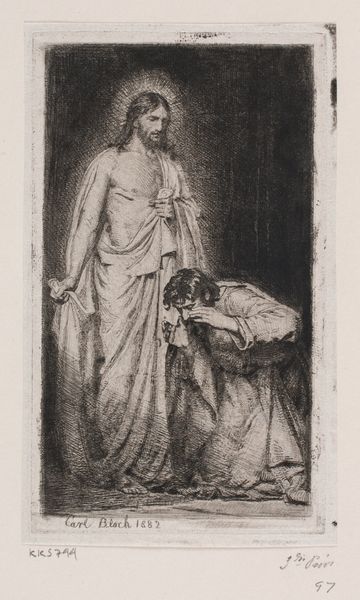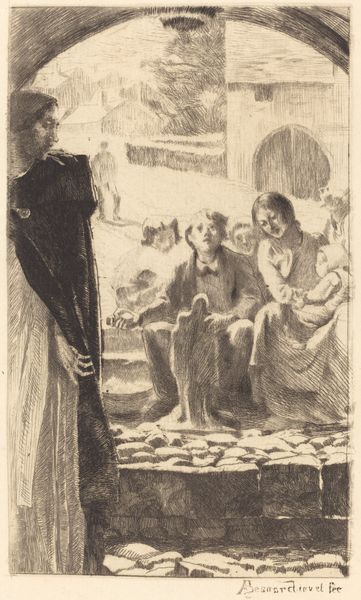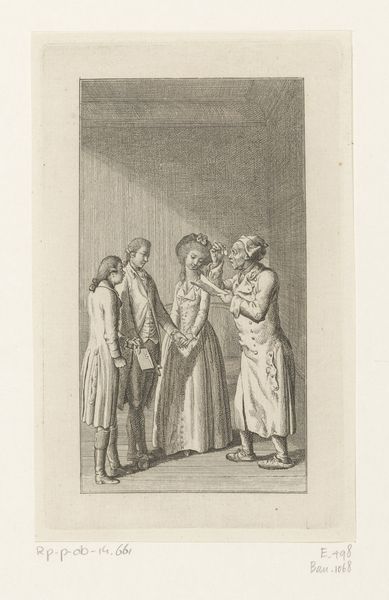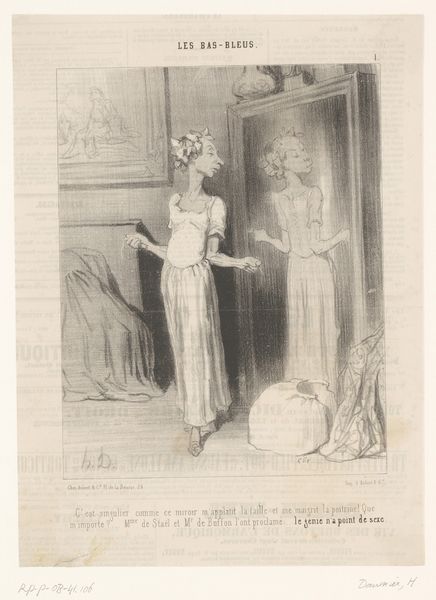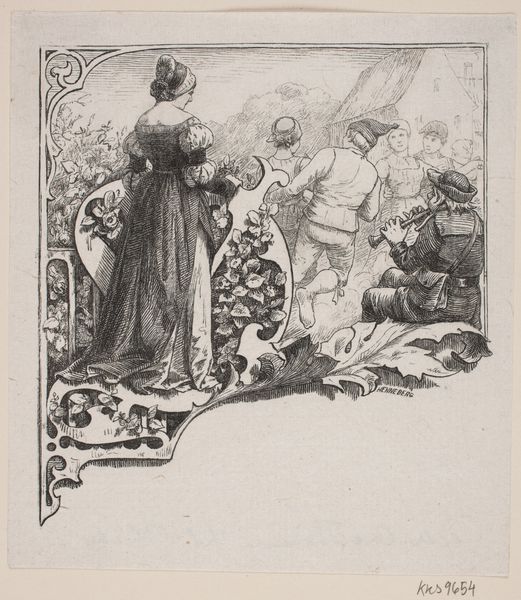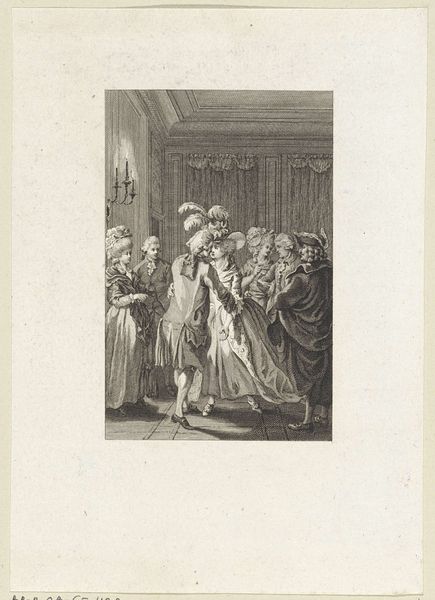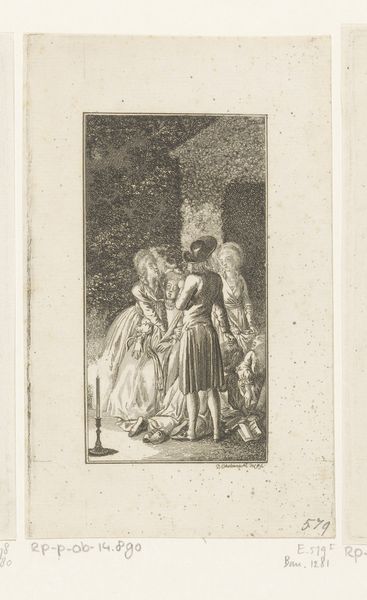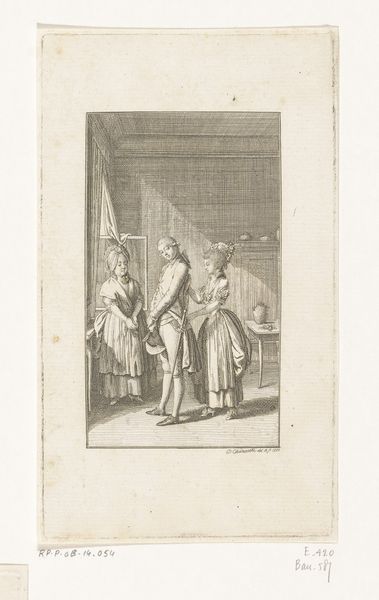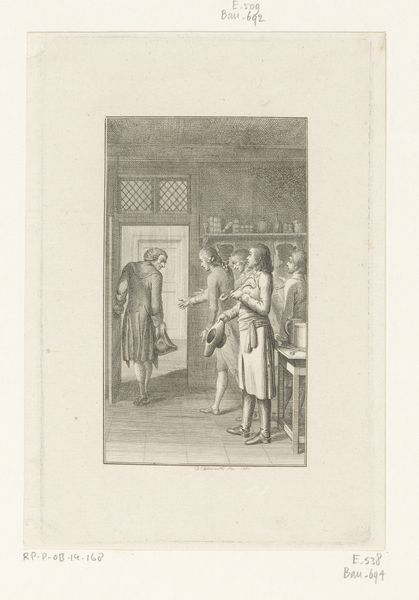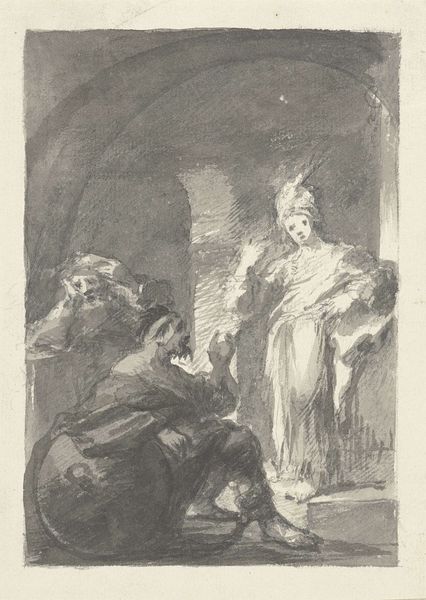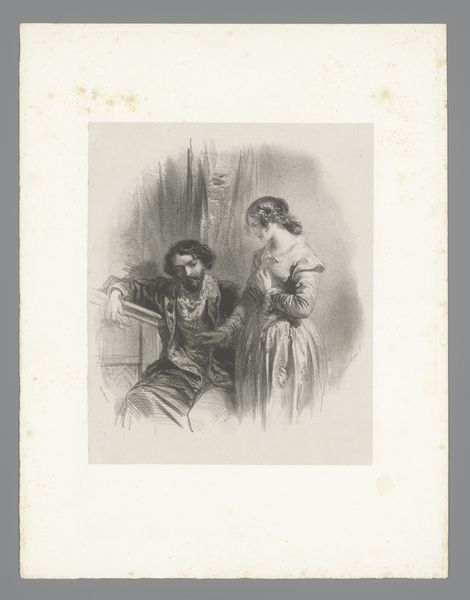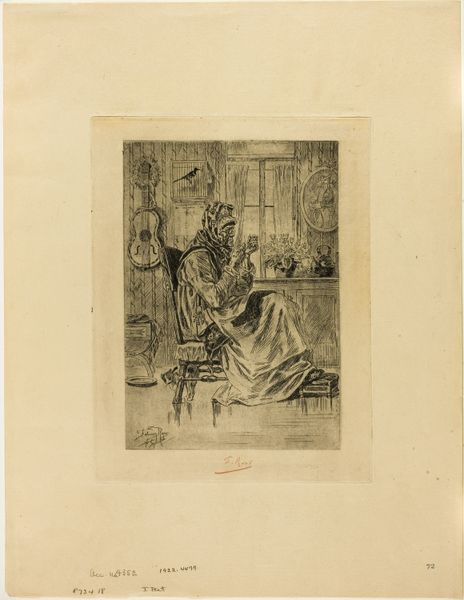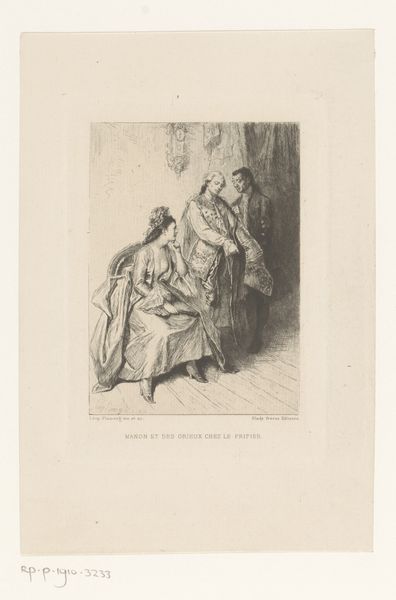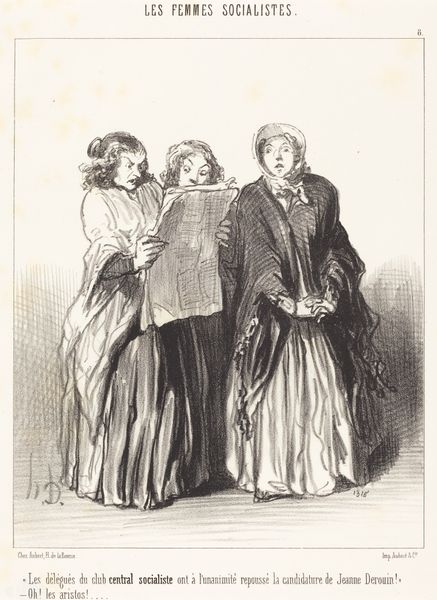
The Mastersingers of Nuremberg, Act I: Walther and Eva Meet c. 1886
0:00
0:00
Dimensions: 227 × 147 mm (image); 323 × 240 mm (sheet)
Copyright: Public Domain
Editor: Here we have Henri Fantin-Latour's lithograph from around 1886, titled "The Mastersingers of Nuremberg, Act I: Walther and Eva Meet." It feels like a glimpse into a hushed, dramatic moment, almost a stage setting. What kind of story do you think Fantin-Latour is telling here? Curator: This piece really underscores the relationship between art and cultural institutions, doesn’t it? Fantin-Latour, deeply influenced by Wagner's opera, uses this lithograph to elevate and popularize Wagner's art. Think about it – how does visual art function as a public expression of taste, even reverence, for another art form? Editor: I hadn't considered it that way. It's like fan art but from a well-respected artist! How do you think the setting affects the interpretation? Curator: Absolutely. Consider the choice of a lithograph to recreate a specific moment from Wagner. This print was widely circulated, effectively democratizing Wagner's music for a larger audience. Before recordings were commonplace, art like this gave more people access. Would you say it simplifies the scene or captures Wagner’s dramatic tone effectively? Editor: It does seem simplified, focusing on the core figures and suggesting the grandeur. So, the context really shapes our understanding? Curator: Precisely. Art isn't made in a vacuum. Museums and galleries shape public perception, but so do cultural movements, popular figures, and prevailing tastes. The very act of Fantin-Latour selecting this operatic scene reveals something about his own artistic ambitions and the artistic climate of the late 19th century. Editor: It’s fascinating to think about how interconnected everything is. Thanks, this has really shifted how I see it. Curator: It's a great example of how history frames what we see. The political dimensions of art become visible when we consider these contextual factors.
Comments
No comments
Be the first to comment and join the conversation on the ultimate creative platform.
